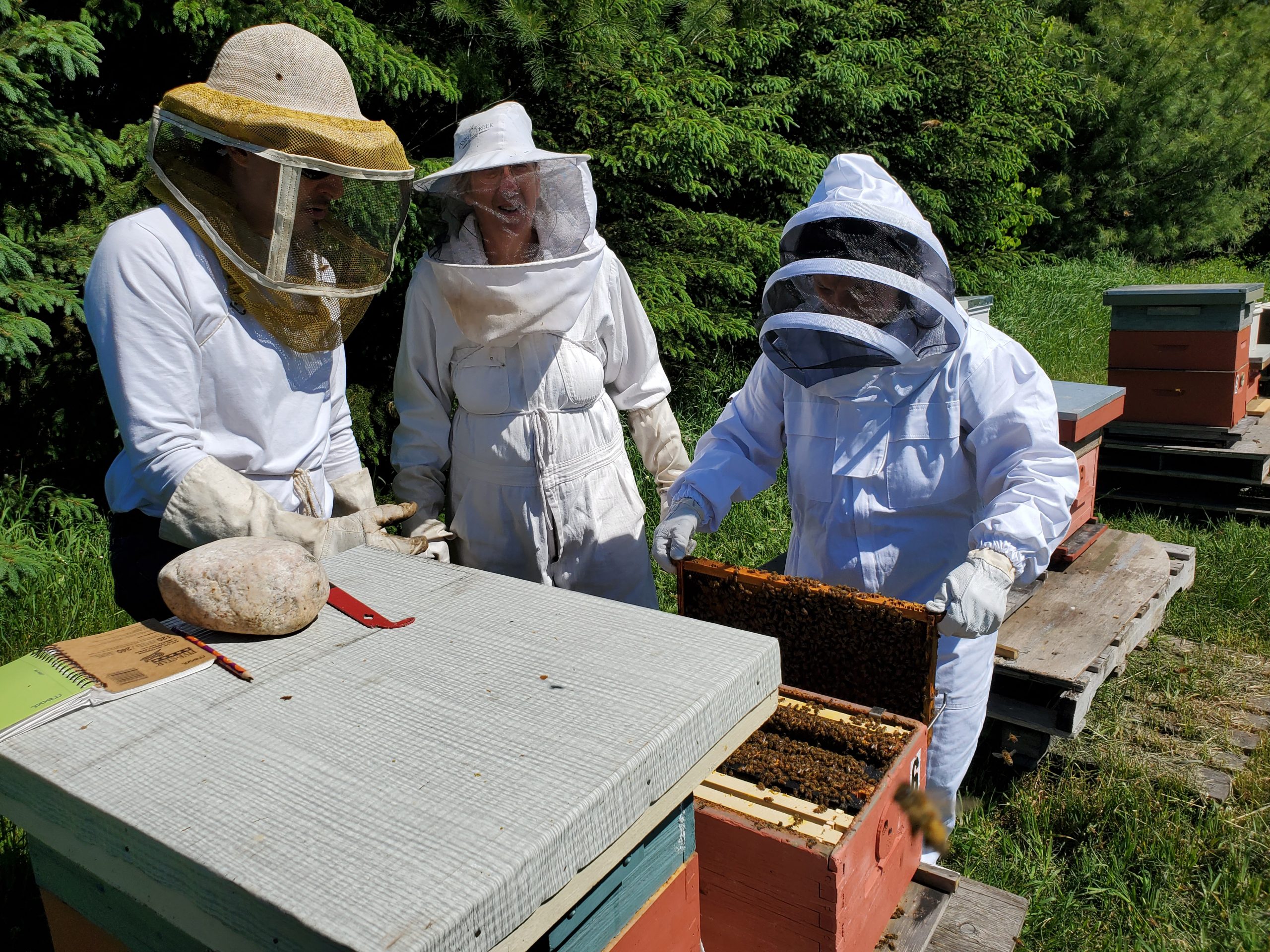With seven of our nine bee hives surviving last winter, our beekeeping team was pretty confident we had this season under control. Little did we know the bees had other plans!
After many conversations as well as planning and building equipment, we decided to double the apiary this season to 16 to 18 hives. With rescued hives, large hives split into two, and teammate Joel preparing enough equipment, we knew we could handle it. Or so we thought!
We know that bees swarm. Swarming is how they continue to reproduce. It’s normal and healthy. What we didn’t expect was a whole summer of swarms. Beekeepers across the province experienced an early, seemingly endless swarming season.
The sound of a swarm is like no other – 10 to 25 thousand bees leave the hive with their queen in a tornado of activity that clouds the air. The sound can be overwhelming, exciting and nerve wracking. They are on their way to create a new hive in another location, leaving the original hive more space to grow. Bee fact – swarms of honey bees, while loud, are not interested in attacking. They have no babies or food to protect.
Early in spring we lost count of how many of our hives swarmed even though we split hives that grew large to avoid swarming. By the end of the season we had 23 hives in three locations. So much for our plan to keep it down to 16 to 18!
As beekeepers at Whole Village, we are committed to keeping bees here where we can create a healthy home and eco-system for them. When someone yells “SWARM!” we stop everything, grab our bee suits, rescue equipment, swarm deterrent tools and watch where they settle – ready to gather them up, put them in a new hive and help them settle in. Thankfully, a couple of times they changed their collective minds about landing at the top of the spruce or pine tree and came down to a manageable height. Otherwise, we become a ladder brigade, perched precariously against a tree while gently scooping handfuls of bees into a bucket and transferring them into a prepared hive.
Swarming is risky business – the bees can lose their queen, settle into a space where they can’t survive the winter or land in a city space or home where they are killed. So in spite of our cancelled appointments, 35 degree days in a bee suit, running around finding and building equipment to house them, and too many stings to count, we all kind of love the excitement and challenge of re-housing swarms.
Bees are amazing – did you know it is the worker bees who decide when to swarm? By fanning the queen, they trim down her naturally larger size so she can keep up with the departing group. They build a new large cell so an emerging larva in the hive can become the new queen. Then, as a collective, they decide when to leave. The new queen will emerge and be ready to mate in a couple of weeks.
While hives swarm and grow, almost 50% of hives don’t survive through the season for many reasons. The primary threat to honey bees is The Varroa Destructor Mite. These mites attach to the bee and weaken it by sucking the bee’s fat bodies, impacting their immune system. This mite is also a vector for at least five debilitating bee viruses, including RNA viruses such as the deformed wing virus (DWV). Another threat to their health is the pesticides and herbicides contained in plants they feed on. Together, mites and poisons are devastating honey bees across the world. 
In spite of a weak honey harvest in the spring with all of the smaller hives, our fall harvest was magnificent. Over 300 pounds of fresh honey is available in 470 ml, 1 KG, or 3 KG. Creamed honey will be available as soon as we find more jars.
We’ve all agreed we won’t expand next year. Let’s see what the bees have in mind.
Interested in knowing more about our bee adventures? Join us on our Whole Village Facebook or Instagram pages. Look out for new opportunities next season to get up close and personal with our apiary team.



